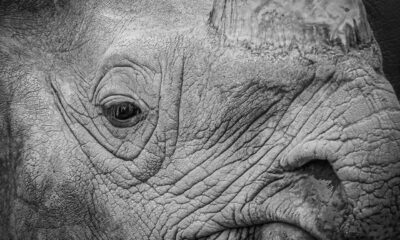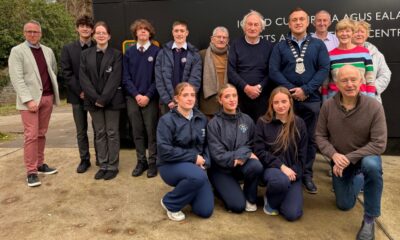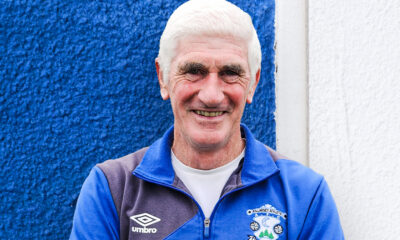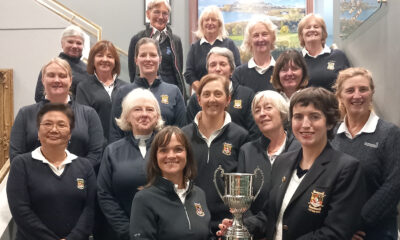News
Call for citizen scientists to help map Rhododendron

Citizens are being asked to play a part in mapping rhododendron to help control its spread.
A new App, the National Biodiversity Data Centres, can be downloaded where members of the public can input data to help locate and treat the plant.
This ornamental plant, once prized for its beautiful flowers and usefulness as a hedge for creating shelter, was planted around Muckross in the 19th Century.
Since then it has spread to, or been planted in, many other locations and is a common sight in many areas. It is a species which originated from the Mediterranean and has done exceedingly well in our Irish climate, particularly here in Kerry.
Rhododendron has thrived at the expense of our own native habitats and species. The old oak woodlands, for which Killarney is renowned, are under serious threat from the invasion of this species, as are many of the peatland habitats such as the heath and bogs. Rhododendron can form dense thickets, blocking light, shading out native vegetation and preventing regeneration.
The National Parks and Wildlife Service (NPWS) have been tackling the Rhododendron in Killarney National Park for many years. In parts of the MacGillycuddy Reeks, such as the Gap of Dunloe and the Black Valley, Rhododendron is also becoming well established. Local farmers regularly comment on the rate of spread over the last 10-15 years and until recently, no action had been taken to address the spread.
Over the last two years, The MacGillycuddy Reeks European Innovation Partnership (EIP) Project, a locally led agri-environmental project, led by South Kerry Development Partnership, funded by the Department of Agriculture, Food and the Marine as part of Ireland’s Rural Development Programme 2014-2020 which aims to improve the sustainability and economic viability of the farming in the MacGillycuddy Reeks, has been working with local landowners in the area to manage Rhododendron ponticum and prevent the loss of protected heath and bog habitats and grazing lands to this species. Given the nature of invasive species, and the speed at which they spread, early intervention leads to more efficient and successful treatment. For many landowners the prospect of dealing with well-established populations on their own is an incredibly daunting task.
BEST PRACTICE
With the support of the EIP project team, a collective working group has been established to assist farmers and landowners in treating rhododendron on their land. It has facilitated mandatory training (Hand Held Pesticide Application, QQI Level 5) on the correct use of pesticides and on best practice methods for treating Rhododendron for all farmers and members of the collective group carrying out this work.
Concerns have been raised about the spread of this invasive species throughout the Kerry UNESCO Biosphere Reserve and beyond where going unchecked it will have a significant impact on our native biodiversity. This year with funding from the National Biodiversity Action Plan (NPWS) and support from Kerry County Council and the Kerry Biosphere team in collaboration with the MacGillycuddy Reeks EIP Project have launched a campaign to raise awareness of this issue and begin the process of mapping the areas where this plant has spread to.
"We are asking citizens to play a part in mapping rhododendron ponticum throughout Kerry using the National Biodiversity Data Centres recording App so that the process of managing this invasive species can begin," Eleanor Turner, Biosphere Officer with the Kerry Biosphere Reserve, told the Killarney Advertiser.
"Later in the year demonstration events for treatment of rhododendron will be held for interested landowners, farmers and community groups."
Control of rhododendron is not a one-time treatment but must be carried out in several phases over a number of years. The Kerry UNESCO Biosphere Reserve will be working over the next number of years to support landowners, farmers and communities in managing this problem.
For more information follow the Kerry UNESCO Biosphere Reserve on Facebook @kerrybiosphere or email kerrybiosphere@skdp.net, or watch a demonstration video for treating rhododendron on Youtube @kerrybiosphere.
News
A winter ascent of the MacGillycuddy Reeks is always special
Killarney resident and experienced mountaineer Melissa Trant recently shared incredible photographs and her account of climbing the snow-capped MacGillycuddy Reeks, highlighting the unique experience of the mountain range during winter. […]
News
Kilcummin GAA announces return of annual Pink Night
The Ladies’ Committee of Kilcummin GAA Club has announced the return of its annual Pink Night, set to take place in The Klub Bar on Saturday, January 3. Now in […]

























